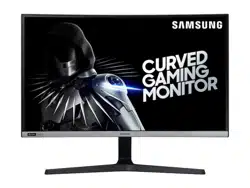Documents: Go to download!
- Owner's manual - (English)
Owner's Guide Computing
Preparations
Parts
Control Panel
The color and shape of parts may differ from what is shown. Specifications are subject to change without notice to improve quality.


| Parts | Description |
|---|---|
| JOG Button |
Multi directional button that helps navigate.
|
| Power LED |
This LED is power status indicator and works as
|
| Function Key Guide |
Press the JOG button when the screen is turned on. The Function Key Guide will appear. To access the onscreen menu when the guide is displayed, press the corresponding direction button again.
|
Function Key Guide
To use the Function Key Guide, press the JOG button. Then the following window appears.
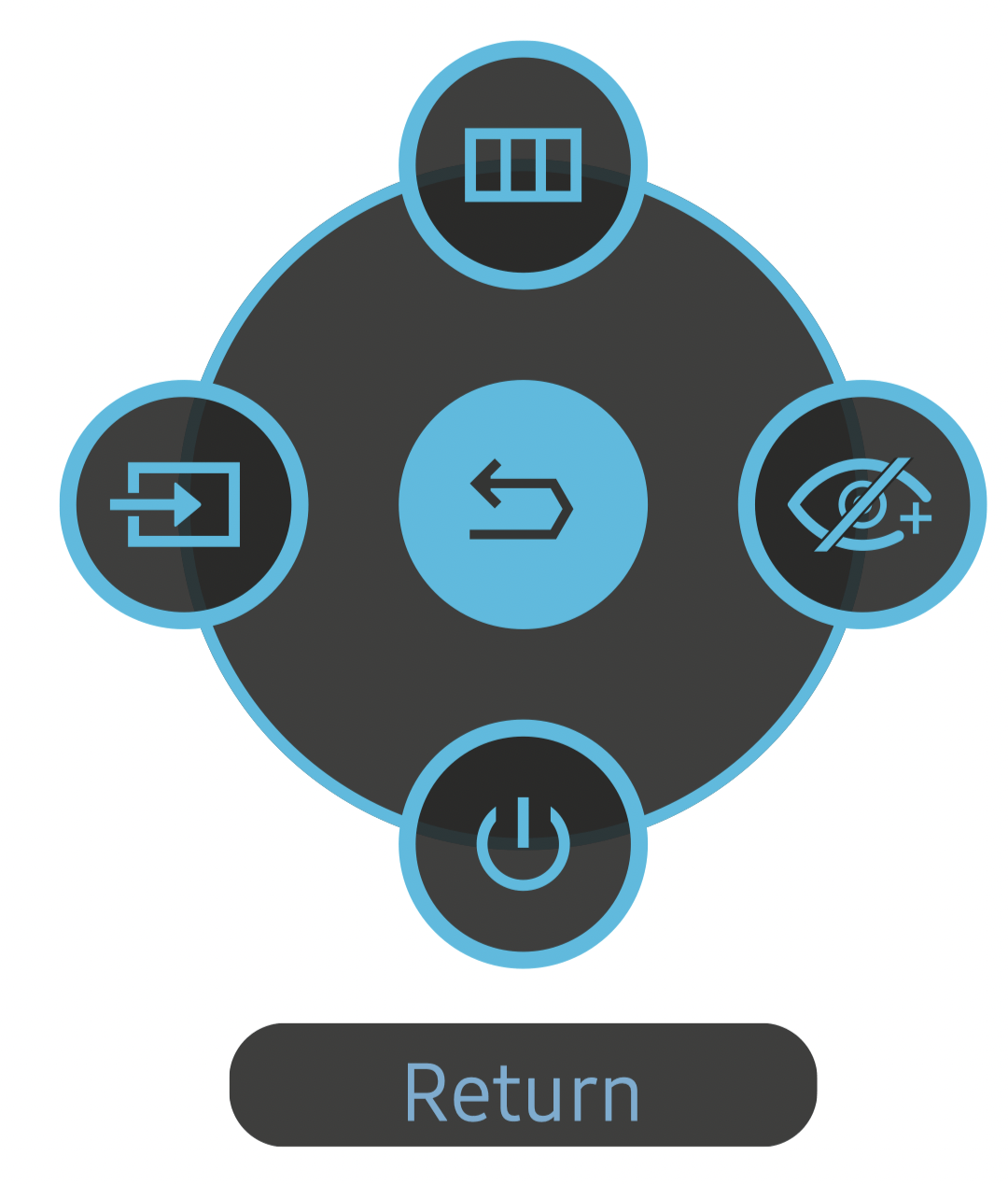
- UP/DOWN/LEFT/RIGHT: Move to the item you want. The description for each item will appear when the focus changes.
- PRESS(ENTER): The selected item will be applied.
| Parts | Description |
|---|---|
 Menu Menu |
Selects This product shows the menu as an on-screen display. |
 Source Source |
Selects |
 Eye Saver Mode Eye Saver Mode |
Selects The items below are not available if the Eye Saver Mode function is enable.
|
 Power Off Power Off |
Selects  to turn the product off by moving the JOG button in the Function Key Guide screen. to turn the product off by moving the JOG button in the Function Key Guide screen. |
 Return Return |
Return to the previous menu by using the JOG button to select the  icon when the Function Key Guide Screen is displayed. icon when the Function Key Guide Screen is displayed. |
Function Key Guide may vary depending on the function or product model. Please refer to the actual product.
When the product displays nothing (i.e. Power saving mode or Non-signal mode), 3 direction buttons for control source and power could be used as below.
| JOG Button | Power saving/Non-signal mode |
|---|---|
| UP | Source Change |
| DOWN | |
| PRESS(ENTER) for 2 seconds | Power Off |
When the product displays the menu the JOG Button could be used as below.
| JOG Button | Action |
|---|---|
| UP/DOWN | Move the option |
| LEFT |
Exit the menu. Close Sublist without saving value. Value decreases in the slider. |
| RIGHT |
Move to sublist. Value increases in the slider. |
| PRESS(ENTER) | Save the value and close Sublist. |
Changing Brightness, Contrast and Sharpness settings
You can adjust Brightness, Contrast or Sharpness by moving the JOG button up or down, if no OSD menu is displayed.

- The displayed image may differ depending on the model.
- The default brightness can vary depending on the region.
Brightness
- This menu is not available when Eye Saver Mode is enabled.
- This menu is not available when Picture Mode is set to Dynamic Contrast mode.
Contrast
- This menu is not available when Picture Mode is set to Cinema or Dynamic Contrast mode.
Sharpness
- This menu is not available when Picture Mode is set to Cinema or Dynamic Contrast mode.
Changing the Volume setting
You can adjust Volume by moving the JOG button left or right, if no OSD menu is displayed.

- The displayed image may differ depending on the model.
- If the audio quality of a connected input device is poor, the Auto Mute function on the product may mute the sound or cause choppy audio when applying the headphones or speakers. Set the input volume for the input device to at least 20% and control the volume using the volume control (JOG button LEFT/RIGHT) on the product.
- What is Auto Mute? The function mutes the audio to improve sound effect when there is sound noise or when the input source is weak, usually due to a problem with the volume of an input device.
- To activate the Mute function, access the Volume control screen, then use the JOG button to move the focus down.
- To deactivate the Mute function, access the Volume control screen, then increase or decrease the Volume.
Types of Ports
The functions available may vary depending on the product model. The color and shape of parts may differ from what is shown. Specifications are subject to change without notice to improve quality. Refer to the actual product.


Upgrading the Software via USB
1. Connect a USB memory to the SERVICE port shown in the figure.

When the screen is on, press the jog button to display the Function Key Guide. When the Function Key Guide is displayed, press and hold the jog button down for approximately 5 seconds.

2. When the message as shown in the following figure is displayed on the product, select Yes to upgrade the software.

3. When the screen as shown in the following figure is displayed, select Yes.
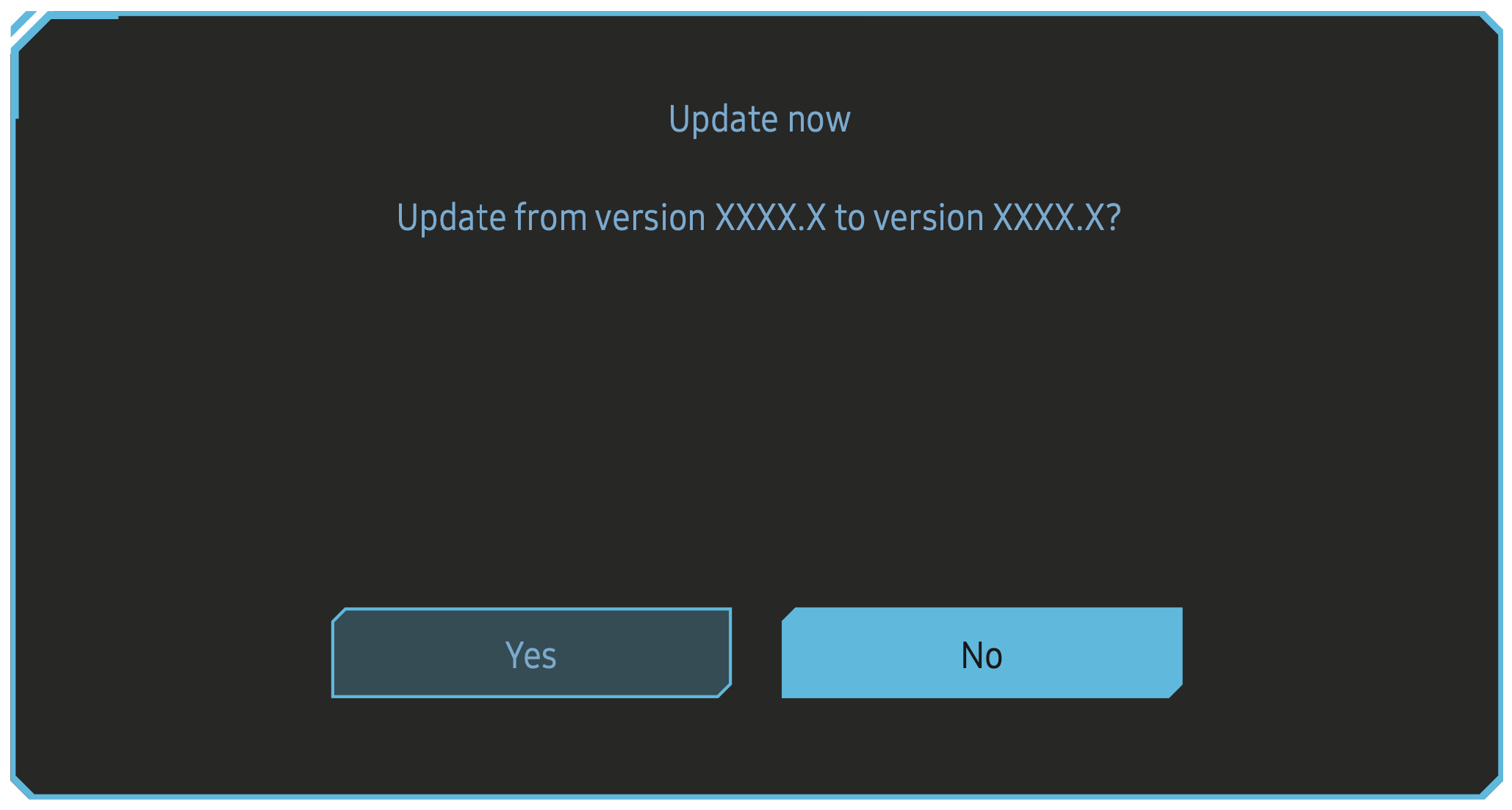
4. When the screen as shown in the following figure is displayed, select Yes.
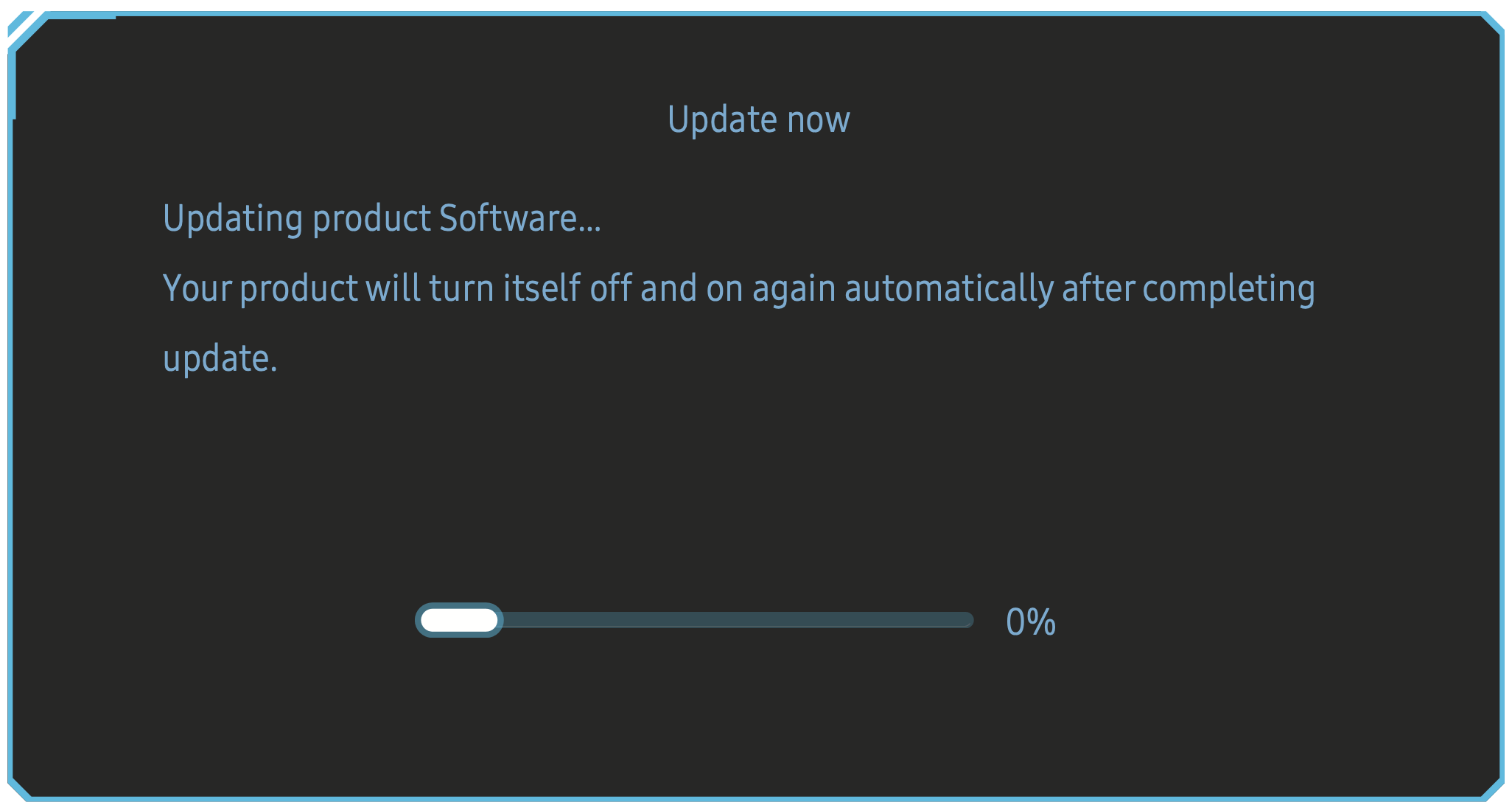
5. Your product will turn itself off and on again automatically after completing update, and then turn off your product.
6. Remove the power cord from the power outlet and then reconnect the cord after turning off.
Note:
1. To perform software upgrade by using a USB memory, first format the USB memory to FAT32.
2. When performing upgrade, make sure that only one BIN file (.bin) is saved in the root directory.
3. To upgrade the software for the CRG5 model, make sure the upgrade files are .bin formats. The file name should follow the naming conventions for the CRG5 model (e.g. M-R50**GGAA-****.*[fourdigit number].bin). The ** is the screen size in inches, the ****.* is the version number, and the fourdigit number is the checksum. For example, “M-R5027GGAA-0800.0[D06E].bin” conforms to the naming conventions for the CRG5 27" model and should be copied to the root directory.
4. If the No valid update files found. Please check your USB device and try again. message is displayed, this is probably due to the following reasons.
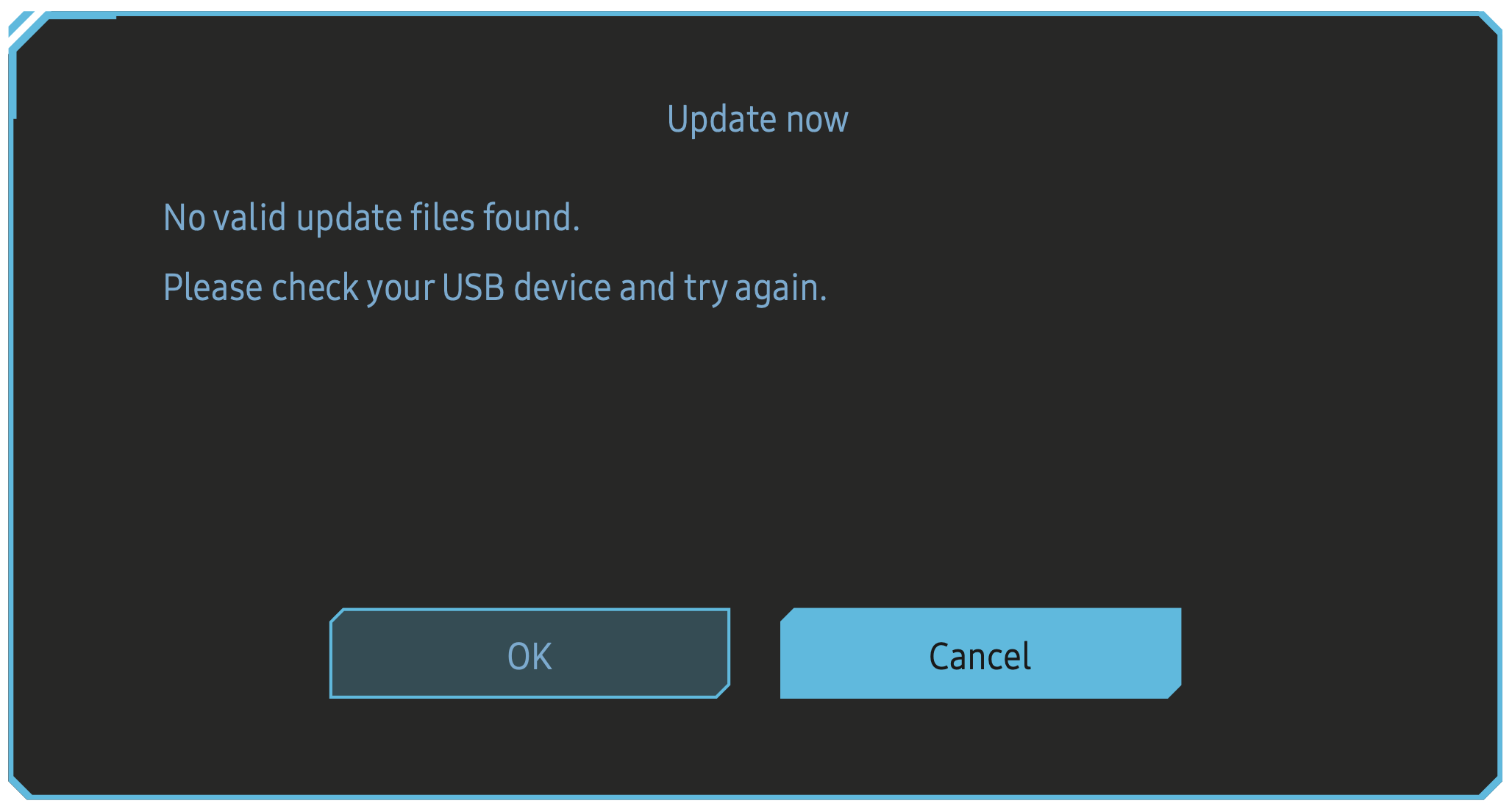
- A USB memory is not connected to the SERVICE port.
- The files in the connected USB memory are not compatible formats.
- There are no valid upgrade files found in the connected USB memory. (There are no upgrade files saved in the memory or the file names are incorrect.)
5. Do not turn off the product. And prevent the upgrading from any interruption as far as possible. In general, the product returns to the previous version if an upgrade is interrupted.
Adjusting the Product Tilt
The color and shape of parts may differ from what is shown. Specifications are subject to change without notice to improve quality.
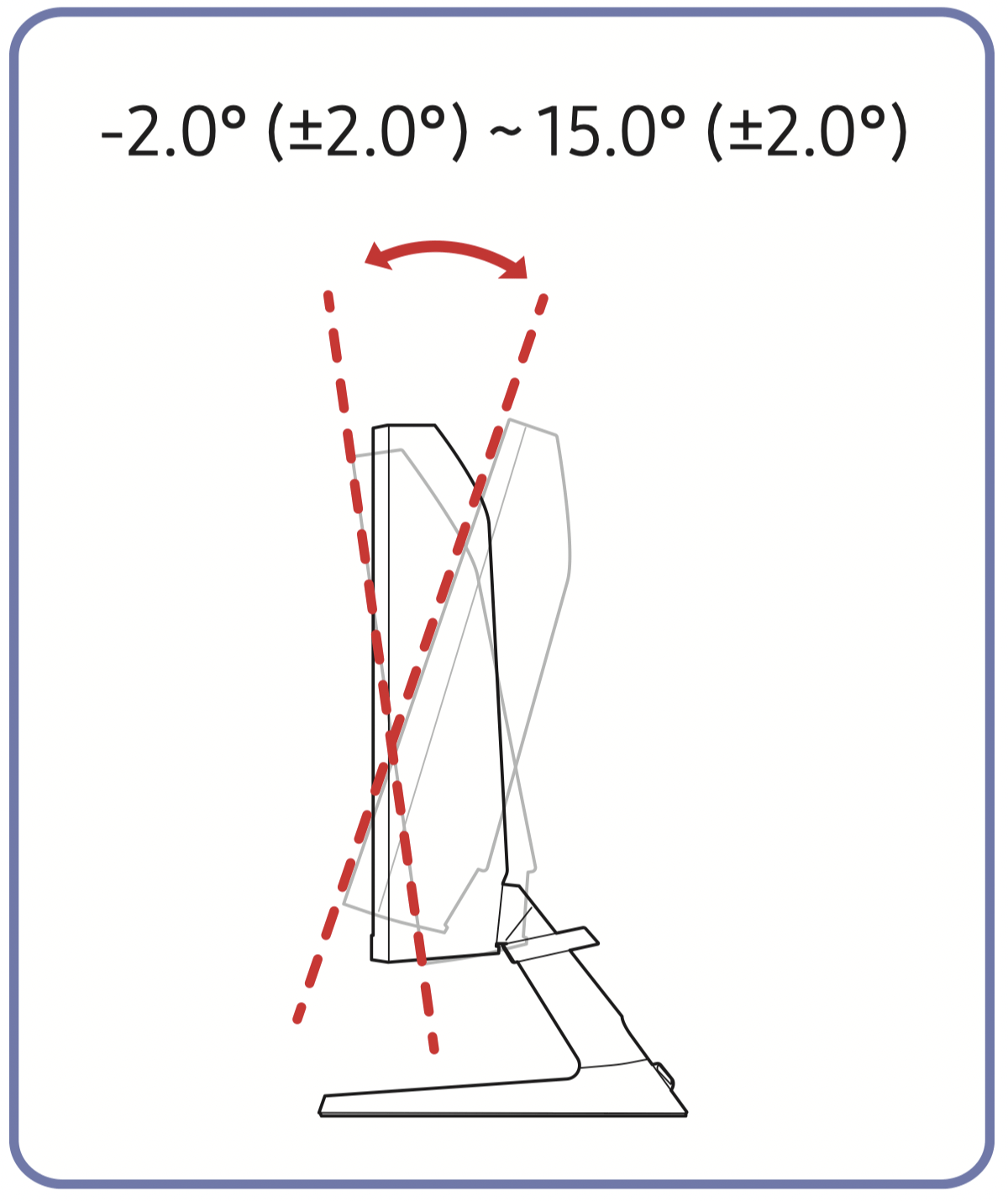
- The product tilt can be adjusted.
- Hold the lower part of the product and adjust the tilt carefully.
Anti-theft Lock
- An anti-theft lock allows you to use the product securely even in public places.
- The locking device shape and locking method depend on the manufacturer. Refer to the user guide provided with your anti-theft locking device for details.
To lock an anti-theft locking device:
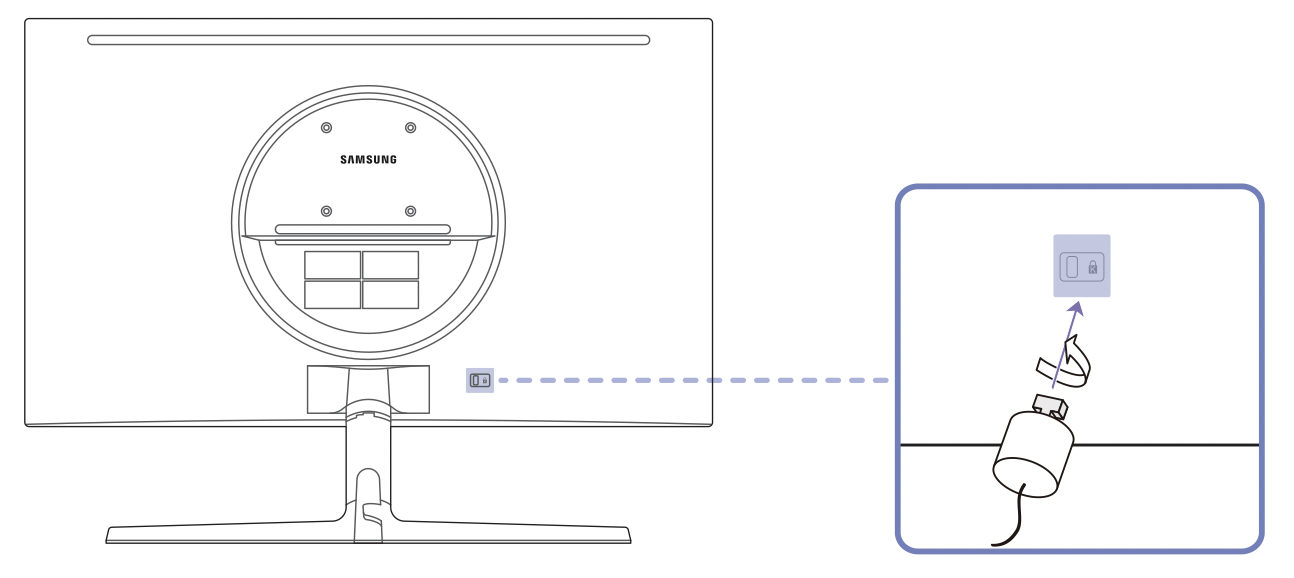
- Fix the cable of your anti-theft locking device to a heavy object such as a desk.
- Put one end of the cable through the loop on the other end.
- Insert the locking device into the anti-theft lock slot at the back of the product.
- Lock the locking device.
- An anti-theft locking device can be purchased separately.
- Refer to the user guide provided with your anti-theft locking device for details.
- Anti-theft locking devices can be purchased at electronics retailers or online.
Precautions for moving the product
- Do not directly apply pressure on the screen.
- Do not hold the screen when moving the product.
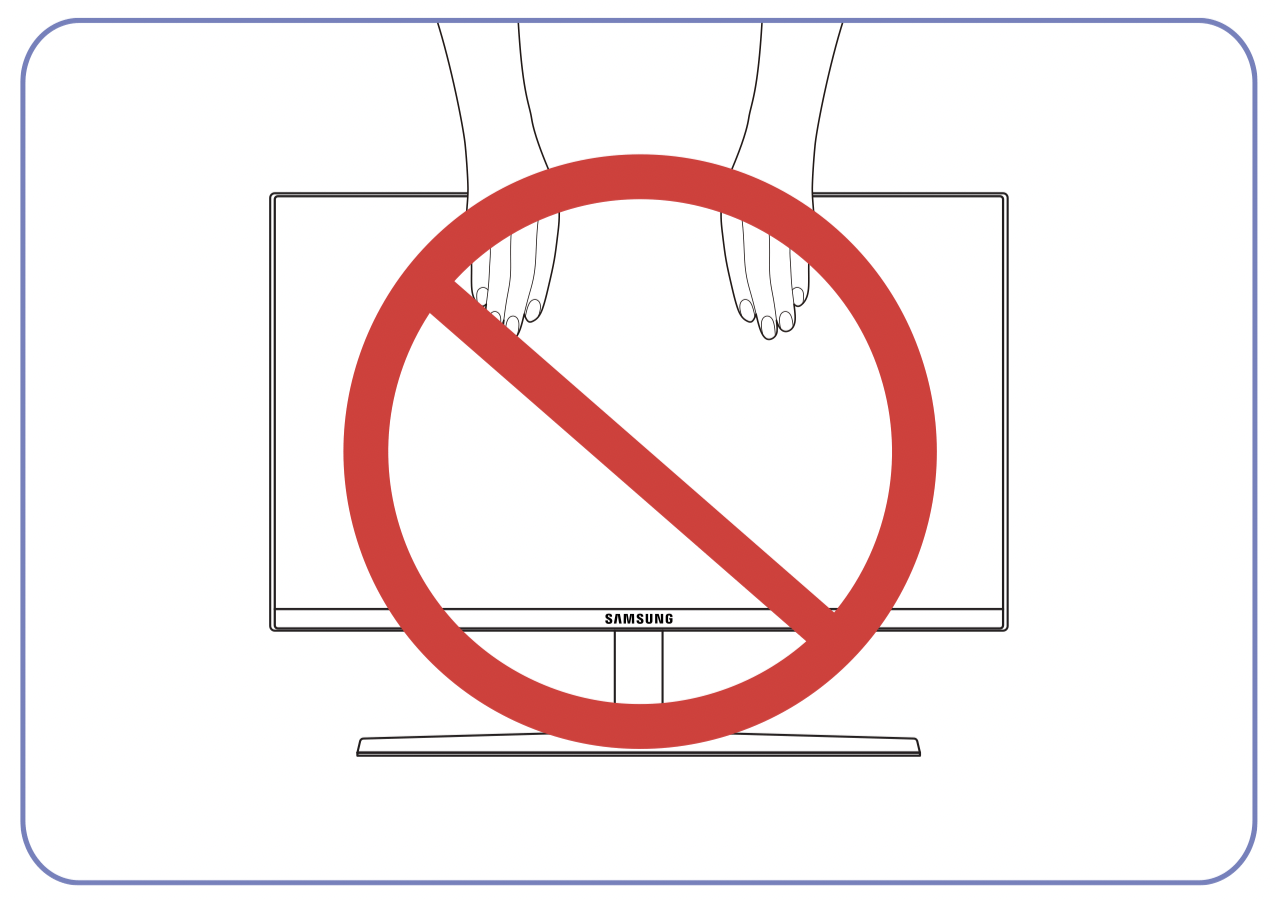
- Do not hold the product upside down only by the stand.
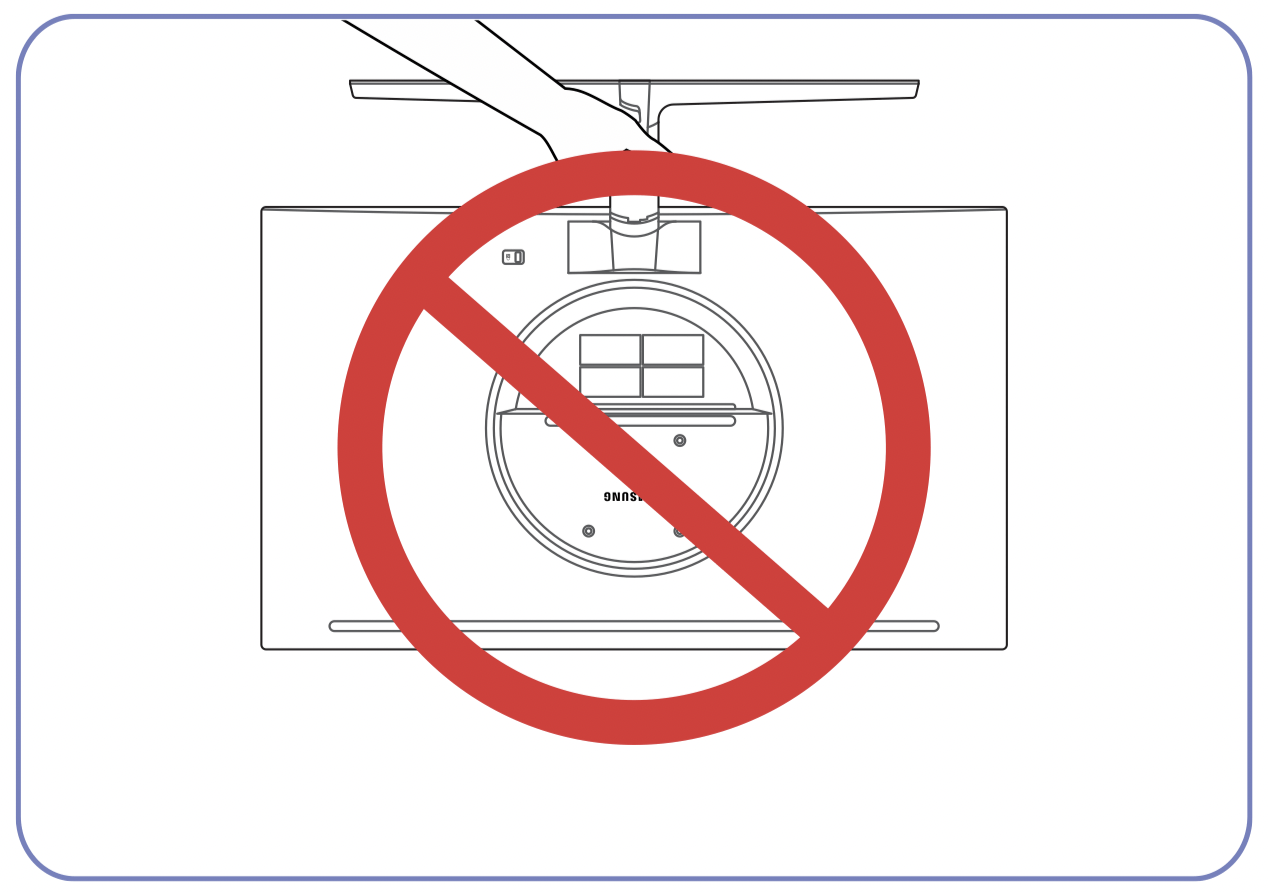
- Hold the lower corners or edges of the product when moving it.

Connecting and Using a Source Device
Connecting and Using a PC
Select a connection method suitable for your PC.
- Connecting parts may differ in different products.
- Provided ports may vary depending on the product.
Connection Using the HDMI Cable

Connection Using an HDMI-DVI Cable

- The audio function is not supported if the source device is connected using the HDMI-DVI cable.
- The optimum resolution may not be available with an HDMI-DVI cable.
Connection Using an DP Cable

- A DP cable shorter under 1.5 m in length is recommended. Using a cable longer than 1.5 m can affect the picture quality.
Connecting to headphones or earphones

- Use headphones or earphones when activating sound with an HDMI-HDMI or DP cable.
- The headphones or earphones jack supports only the 3 conductor tip-ring-sleeve (TRS) type.
Connecting the Power
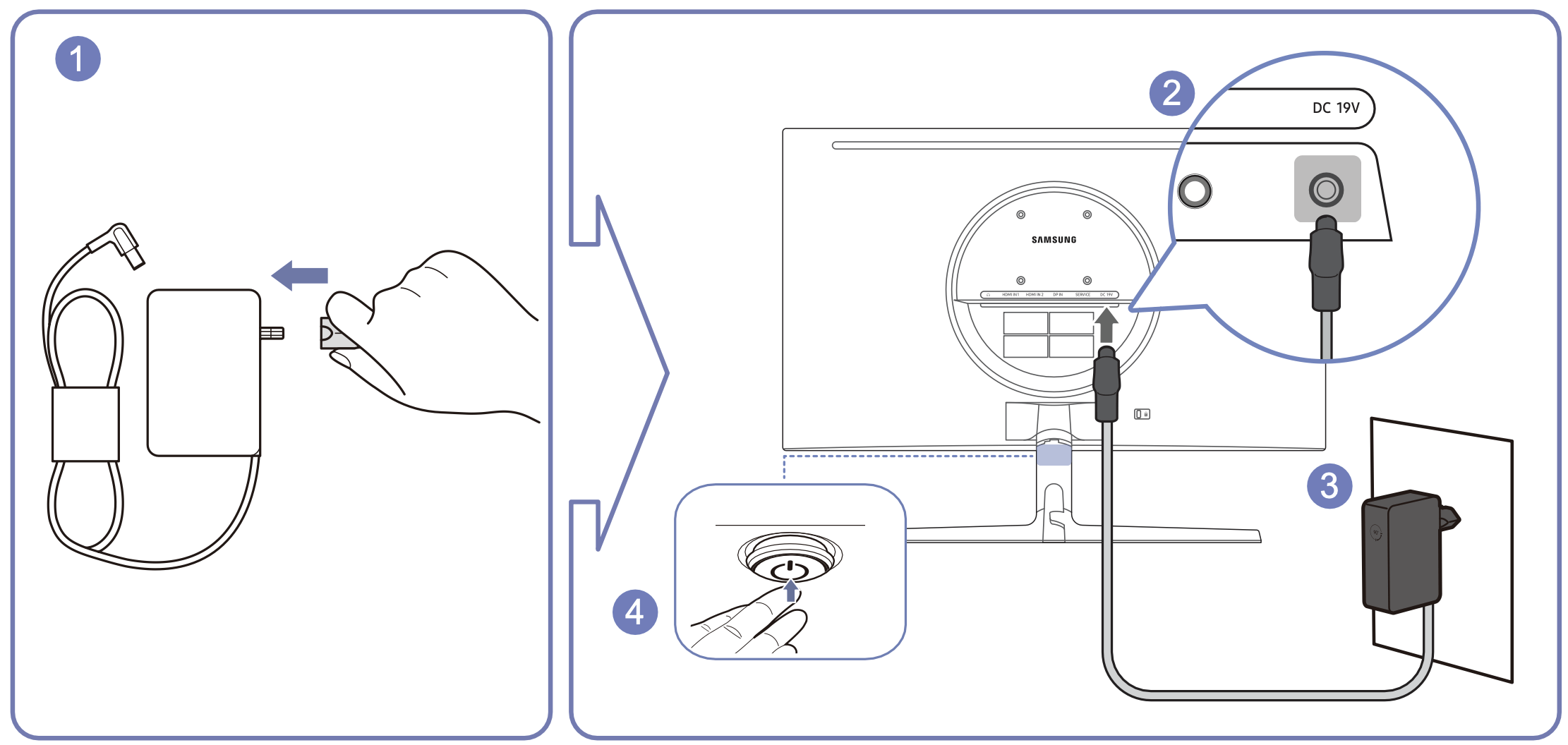
- Connect the power plug to the AC/DC adapter.
- Connect the AC/DC adapter cable to the DC 19V port on the back of the monitor.
- Plug the AC/DC adapter into the power outlet.
- Press the JOG button at the bottom of the product to turn it on.
- The input voltage is switched automatically.
Tidying Up the Connected Cables
1. Connect cables to their port and route them through the ring on the back of the stand.
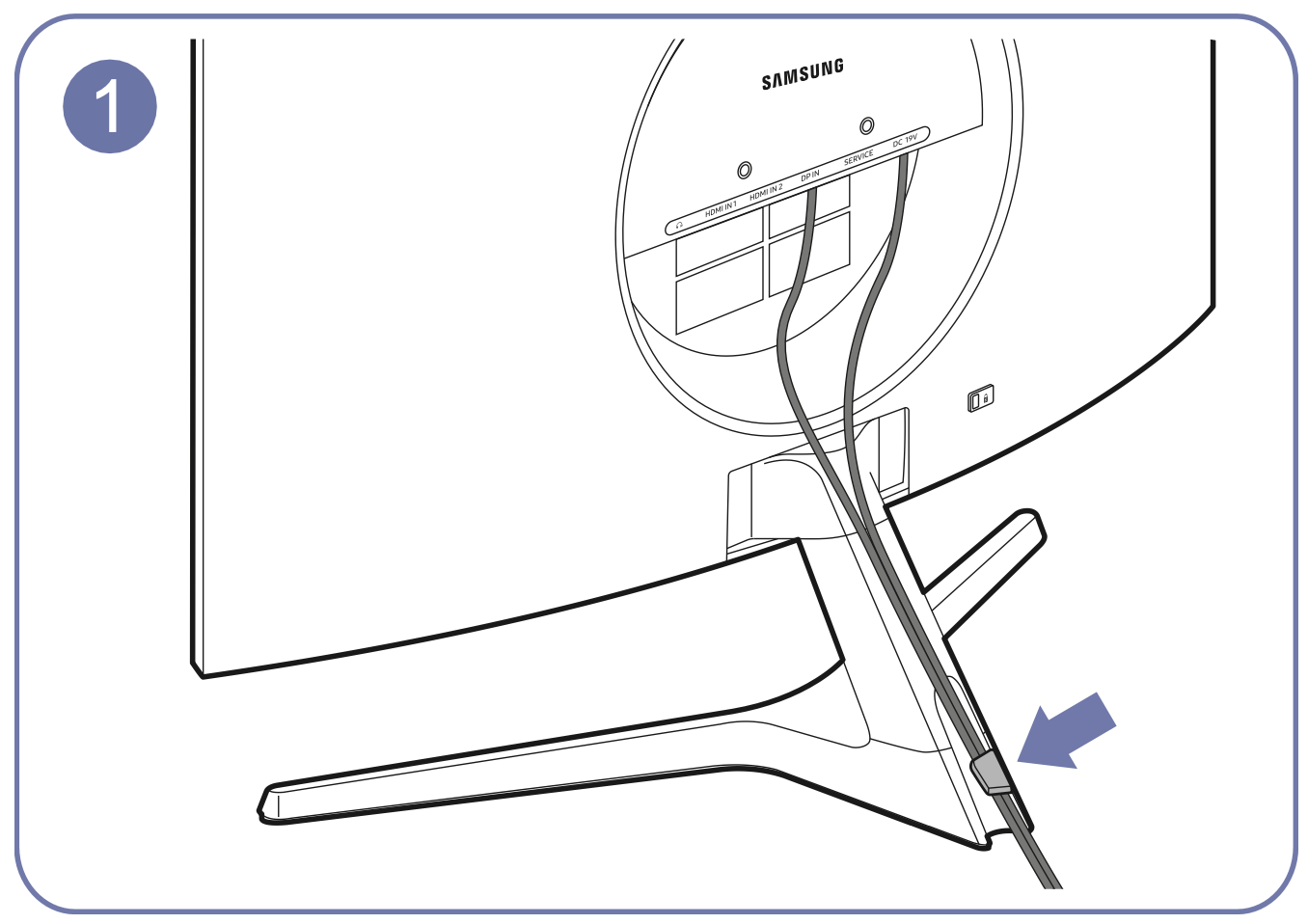
2. Push the cables further close to the stand.

3. Route the cables through the HOLDER-CABLE.
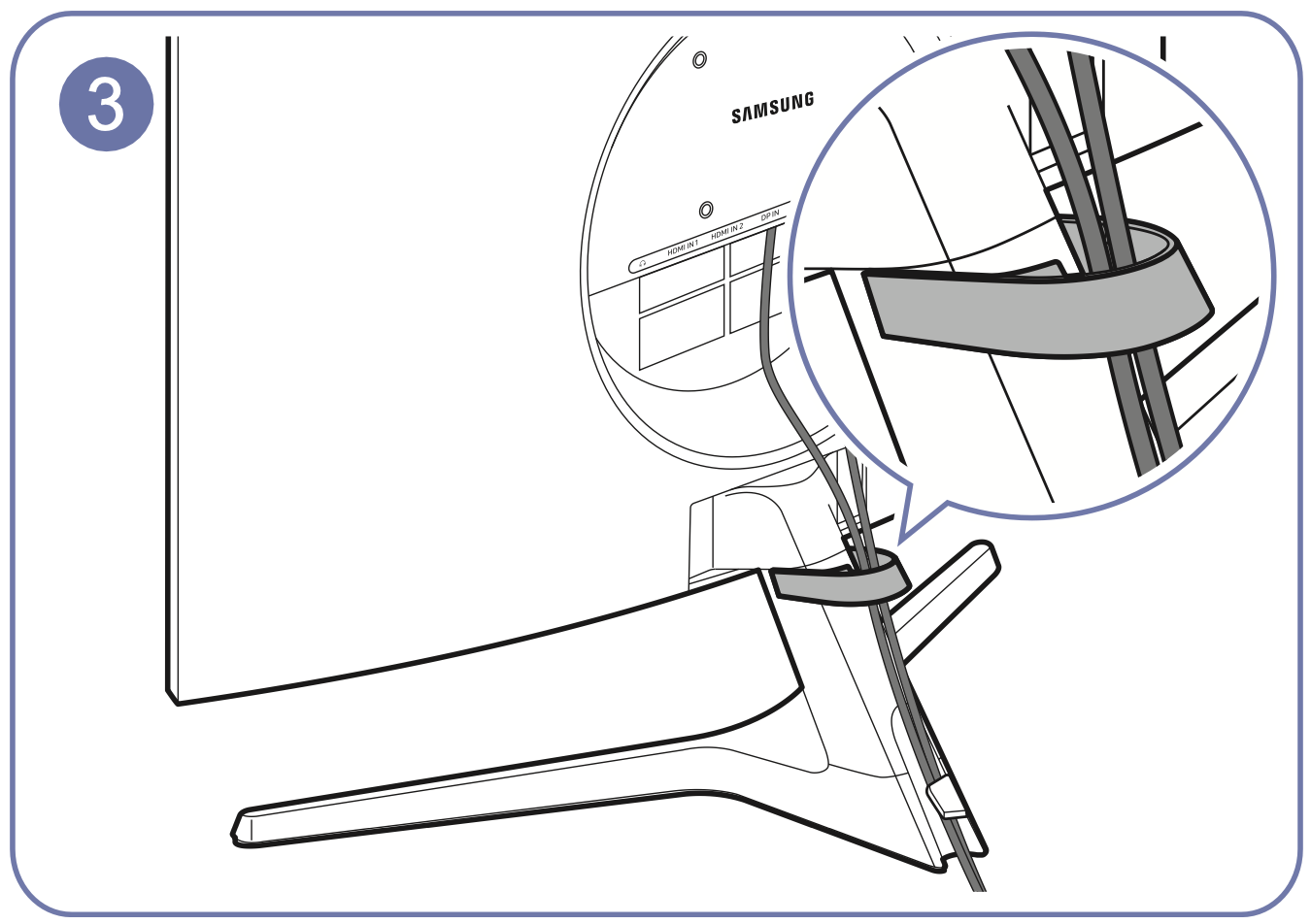
4. Secure the HOLDER-CABLE to the stand. (HOOK type)
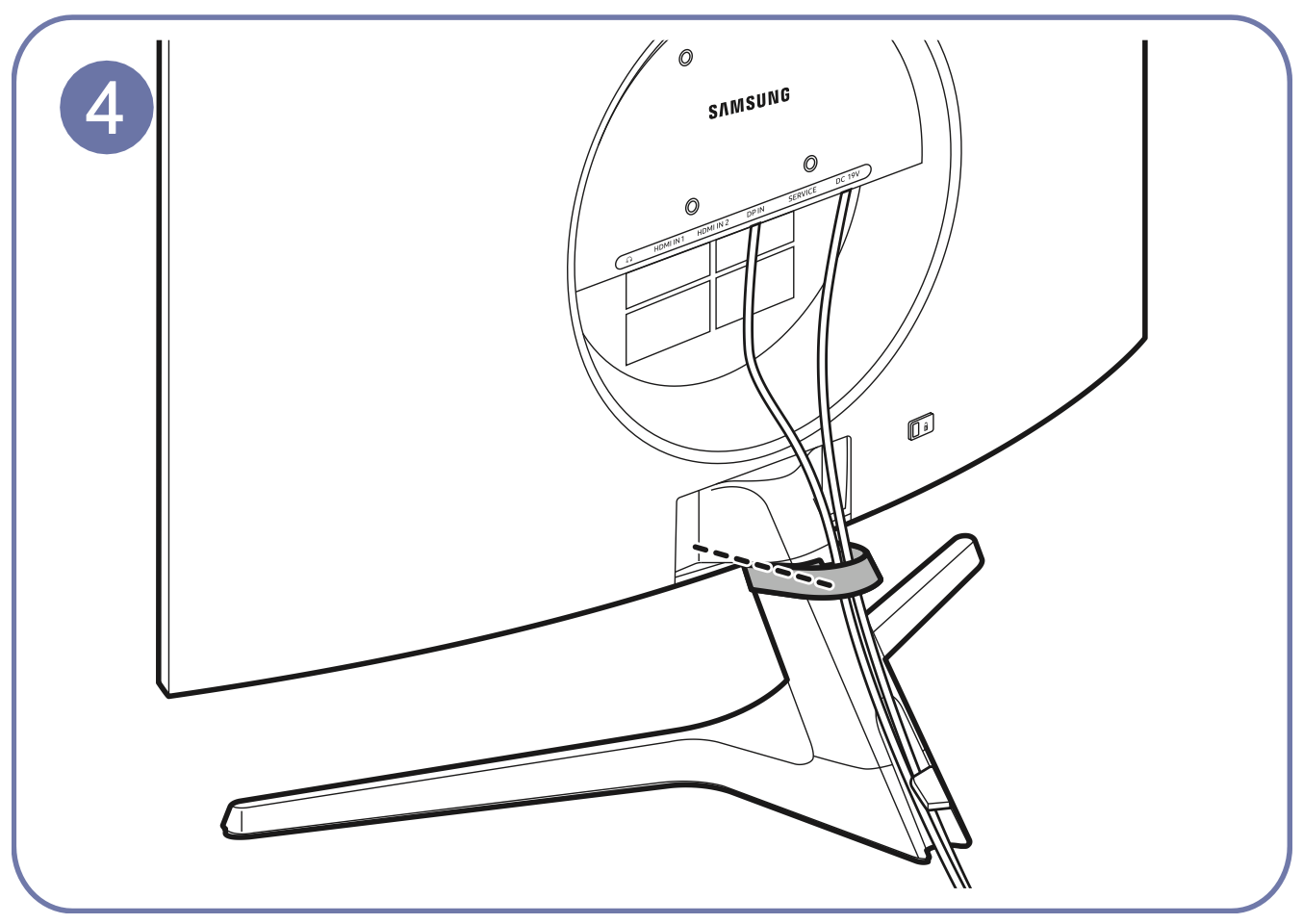
5. Cables arrangement is complete.
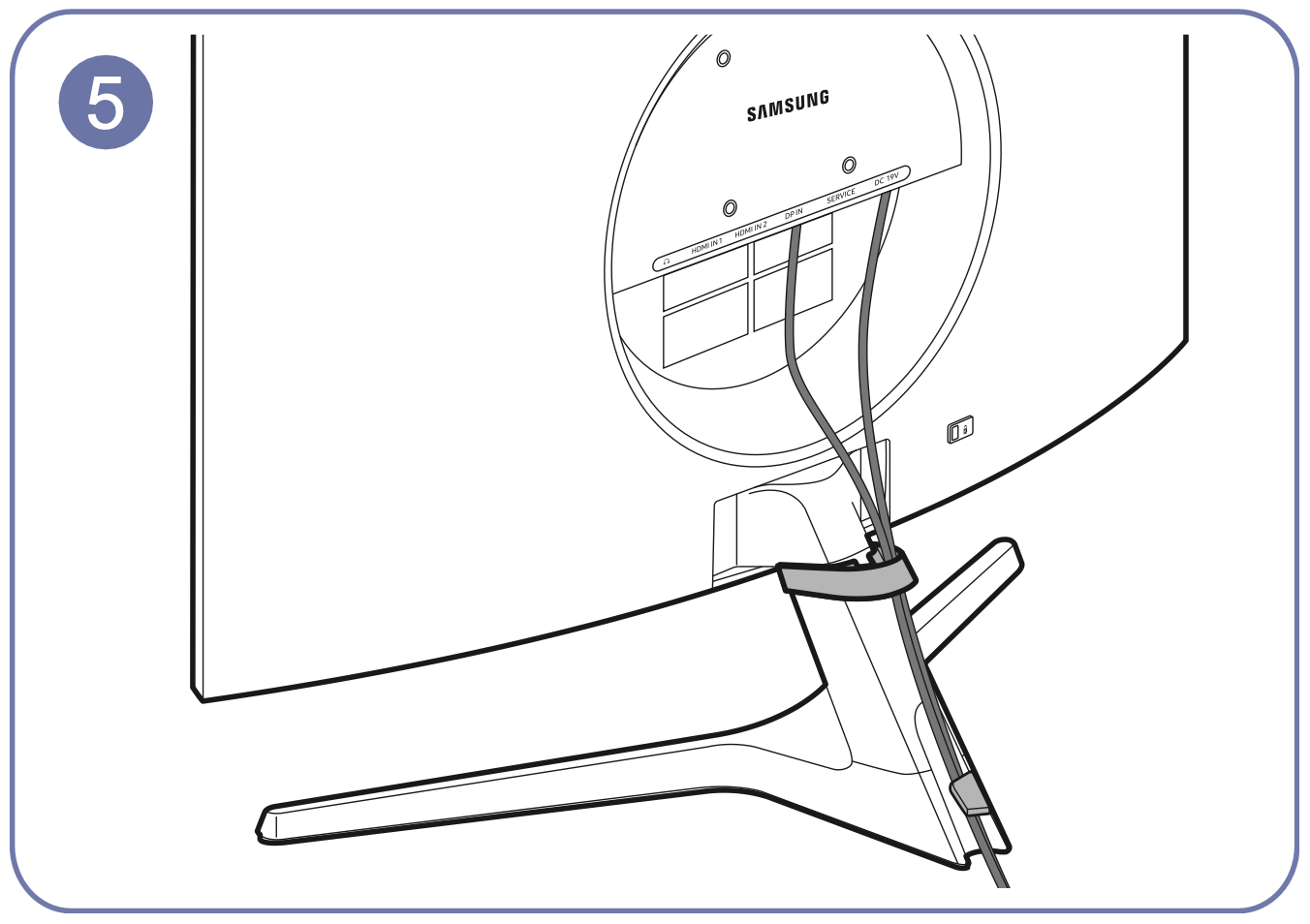
View from the front
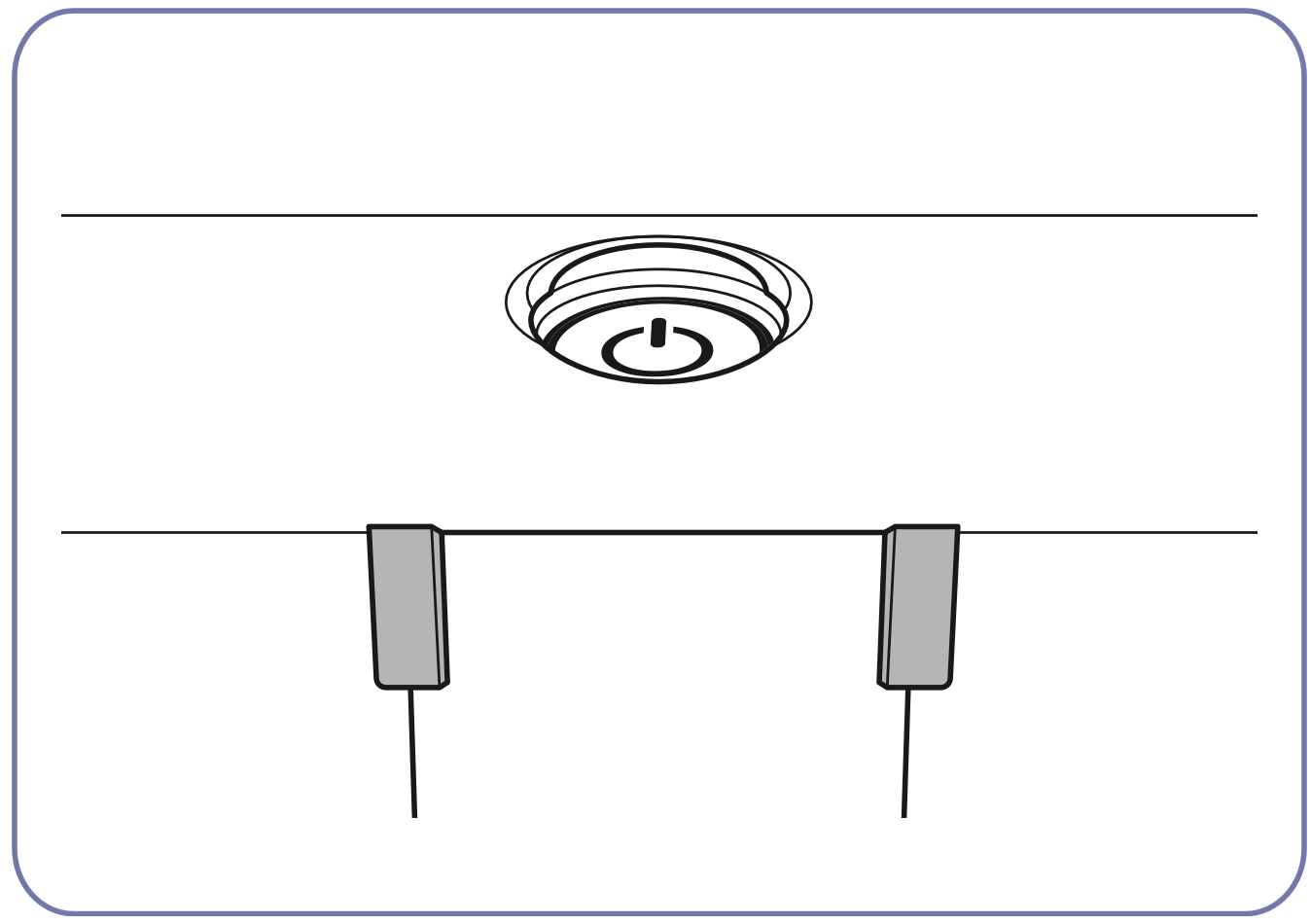
Picture
The functions available may vary depending on the product model. The color and shape of parts may differ from what is shown. Specifications are subject to change without notice to improve quality.
Picture Mode
This menu provides an optimum picture quality suitable for the environment where the product will be used.
- This menu is not available when Eye Saver Mode is enabled.
In PC mode
- Custom: Customize the screen settings.
- FPS: Increase the brightness of darker areas of the FPS (First-Person Shooter) game screen. This mode increases visibility of your enemies during a FPS (First-Person Shooter) game.
- RTS: Increase the color temperature and contrast ratio to improve visibility of the RTS (Real-Time Strategy) screen and minimap.
- RPG: This mode is optimized for 3D graphics and instant messaging on the RPG (Role Playing Game) game screen.
- AOS: Increase the contrast ratio to obtain a picture quality optimized for the AOS (Aeon Of Strife) game screen.
- Cinema: Obtain the brightness and sharpness of monitors suitable for enjoying video and DVD content.
- Dynamic Contrast: Obtain balanced brightness through automatic contrast adjustment.
In AV mode
When the external input is connected through HDMI/DP and PC/AV Mode is set to AV, Picture Mode has four picture settings (Dynamic, Standard, Movie and Custom) that are preset at the factory. You can activate either Dynamic, Standard, Movie or Custom. You can select Custom which automatically recalls your personalized picture settings.
- Dynamic: Select this mode to view a sharper image than in Standard mode.
- Standard: Select this mode when the surroundings are bright.
- Movie: Select this mode when the surroundings are dark. This will save power and reduce eye fatigue.
- Custom: Select this mode when you want to adjust the image according to your preferences.
Brightness
You can adjust the general brightness of the picture. (Range: 0~100) A higher value will make the picture appear brighter.
- This menu is not available when Eye Saver Mode is enabled.
- This menu is not available when Picture Mode is set to Dynamic Contrast mode.
Contrast
Adjust the contrast between the objects and background. (Range: 0~100) A higher value will increase the contrast to make the object appear clearer.
- This menu is not available when Picture Mode is set to Cinema or Dynamic Contrast mode.
Sharpness
Make the outline of objects more clear or blurry. (Range: 0~100) A higher value will make the outline of objects clearer.
- This menu is not available when Picture Mode is set to Cinema or Dynamic Contrast mode.
Color
Adjust the tint of the screen.
This menu is not available when Eye Saver Mode is enabled.
This menu is not available when Picture Mode is set to Cinema or Dynamic Contrast mode.
- Color Tone: Select a color tone that best suits your viewing needs.
- Cool 2: Set the color temperature to be cooler than Cool 1.
- Cool 1: Set the color temperature to be cooler than Normal mode.
- Normal: Display the standard color tone.
- Warm 1: Set the color temperature to be warmer than Normal mode.
- Warm 2: Set the color temperature to be warmer than Warm 1.
- Custom: Customize the color tone.
- When the external input is connected through HDMI/DP and PC/AV Mode is set to AV, Color Tone has four color temperature settings (Cool, Normal, Warm and Custom).
- Red: Adjust the red saturation level. Values closer to 100 mean greater intensity for the color.
- Green: Adjust the green saturation level. Values closer to 100 mean greater intensity for the color.
- Blue: Adjust the blue saturation level. Values closer to 100 mean greater intensity for the color.
- Gamma: Adjust the middle level of luminance.
- Mode1 / Mode2 / Mode3
HDMI Black Level
If a DVD player or set-top box is connected to the product via HDMI, image quality degradation (contrast/ color degradation, black level, etc.) may occur, depending on the connected source device.
In such case, HDMI Black Level can be used to adjust the image quality.
This function is only available in HDMI1, HDMI2 mode.
- Normal: Select this mode when there is no contrast ratio degradation.
- Low: Select this mode to reduce the black level and increase the white level when there is a contrast ratio degradation.
HDMI Black Level may not be compatible with some source devices.
The HDMI Black Level feature is only activated at a certain AV resolution, such as 720P @ 60Hz and 1080P @ 60Hz.
Troubleshooting Guide
Monitor diagnosis (Screen issue)
If a problem occurs with the monitor screen, run Self Diagnosis to check that the monitor is working properly.
Checking the Resolution and Frequency
If a resolution that is not supported (see the Standard Signal Mode Table) is selected, the Not Optimum Mode message may appear for a short time or the screen may not be displayed properly.
- The displayed resolution may vary, depending on the PC system settings and cables.
Check the following.
Installation issue (PC mode)
- The screen keeps switching on and off.
- Check the cable connection between the product and PC, and ensure the connectors are locked.
- Blank spaces are found on all four sides of the screen when an HDMI or HDMI-DVI cable is connected to the product and PC.
- The blank spaces found on the screen have nothing to do with the product.
- Blank spaces on the screen are caused by the PC or graphics card. To resolve the problem, adjust the screen size in the HDMI or DVI settings for the graphics card.
- If the graphics card settings menu does not have an option to adjust the screen size, update the graphics card driver to the latest version.
- (Please contact the graphics card or PC manufacturer for further details about how to adjust the screen settings.)
Screen issue
- The power LED is off. The screen will not switch on.
- Check that the power cable is connected properly.
- If a problem occurs with the monitor screen, run Self Diagnosis to check that the monitor is working properly.
- The message Check the cable connection and the settings of the source device. appears.
- Check that the cable is properly connected to the product.
- If the monitor is in HDMI1, HDMI2 or DisplayPort mode, press the JOG button to display the Function Key Guide screen and select the
 icon. Select PC or AV as shown on the menu screen.
icon. Select PC or AV as shown on the menu screen.
- Not Optimum Mode is displayed.
- This message appears when the signal from the graphics card exceeds the maximum resolution or frequency for the product.
- Change the maximum resolution and frequency to suit the product performance, referring to Standard Signal Mode Table (P.44).
- The images on the screen look distorted.
- Check the cable connection to the product.
- The screen is not clear. The screen is blurry.
- Remove any accessories (video extension cable, etc.) and try again.
- Set the resolution and frequency to the recommended level.
- The screen appears unstable and shaky. There are shadows or ghost images left on the screen.
- Check that the resolution and frequency for the PC are within the range of resolution and frequency compatible with the product. Next, if required, change the settings, referring to Standard Signal Mode Table (P.44) in this manual and the Information menu on the product.
- The screen is too bright. The screen is too dark.
- Adjust Brightness and Contrast.
- Screen color is inconsistent.
- Change the Color settings.
- The colors on the screen have a shadow and are distorted.
- Change the Color settings.
- White does not really look white.
- Change the Color settings.
- There is no image on the screen and the power LED blinks every 0.5 to 1 second.
- The product is operating in power-saving mode.
- Press any key on the keyboard or move the mouse to return to normal operating mode.
- Text is blurry.
- If using a Windows OS (e.g. Windows 7, Windows 8, Windows 8.1 or Windows 10): Go to Control Panel → Fonts → Adjust ClearType text and change Turn on ClearType.
- Video playback is choppy.
- Playback of high-definition large video files can be choppy. This may be because the video player is not optimized for the PC resource.
- Try playing the file on another video player.
Sound issue
- There is no sound.
- Re-check the condition of the connected audio cable and/or adjust the volume.
- Check the volume.
- Check whether audio is set to mute.
- The volume is too low.
- Adjust the volume.
- If the volume is still low after turning it up to the maximum level, adjust the volume on your PC sound card or software program.
- Video is available but there is no sound.
- Sound cannot be heard if an HDMI-DVI cable is used to connect the input device.
- Connect the device using an HDMI cable or a DP cable.
Source device issue
- A beeping sound is heard when my PC is booting.
- If a beeping sound is heard when your PC is booting, have your PC serviced.
Q&A
- Refer to the user manual for your PC or graphics card for further instructions on adjustment.
- The path to the settings depends on the installed OS.
How can I change the frequency?
Set the frequency on your graphics card.
- Windows 7: Go to Control Panel → Appearance and Personalization → Display → Screen Resolution → Advanced settings → Monitor, and adjust Screen Refresh Rate under Monitor settings.
- Windows 8 (Windows 8.1): Go to Settings → Control Panel → Appearance and Personalization → Display → Screen Resolution → Advanced settings → Monitor, and adjust Refresh rate under Monitor settings.
- Windows 10: Go to Settings → System → Display → Advanced display settings → Display adapter properties → Monitor, and adjust Screen refresh rate under Monitor settings.
How can I change the resolution?
- Windows 7: Go to Control Panel → Appearance and Personalization → Display → Screen Resolution → Adjust Resolution.
- Windows 8 (Windows 8.1): Go to Settings → Control Panel → Appearance and Personalization → Display → Adjust Resolution, and adjust the resolution.
- Windows 10: Go to Settings → System → Display → Advanced display settings, and adjust the resolution.
How do I set power-saving mode?
- Windows 7: Go to Control Panel → Appearance and Personalization → Personalization → Screen Saver Settings → Power options or BIOS SETUP on the PC.
- Windows 8(Windows 8.1): Go to Settings → Control Panel → Appearance and Personalization → Personalize → Screen Saver Settings → Power options or BIOS SETUP on the PC.
- Windows 10: Go to Settings → Personalization → Lock screen → Screen timeout settings → Power & sleep or BIOS SETUP on the PC.
See other models: NP730QAA-K01US XE510C24-K01US 10.5”, RAM/256GB SM-T867UZAASPR
 power button is located in the lower center of the screen and used to turn the power on or off.
power button is located in the lower center of the screen and used to turn the power on or off. by moving the JOG button in the Function Key Guide screen.
by moving the JOG button in the Function Key Guide screen. to change the input source by moving the JOG button in the Function Key Guide screen. A message will appear on the top left corner of the screen if the input source has been changed.
to change the input source by moving the JOG button in the Function Key Guide screen. A message will appear on the top left corner of the screen if the input source has been changed. by moving the JOG button in the Function Key Guide screen. Press to enable or disable Eye Saver Mode.
by moving the JOG button in the Function Key Guide screen. Press to enable or disable Eye Saver Mode.